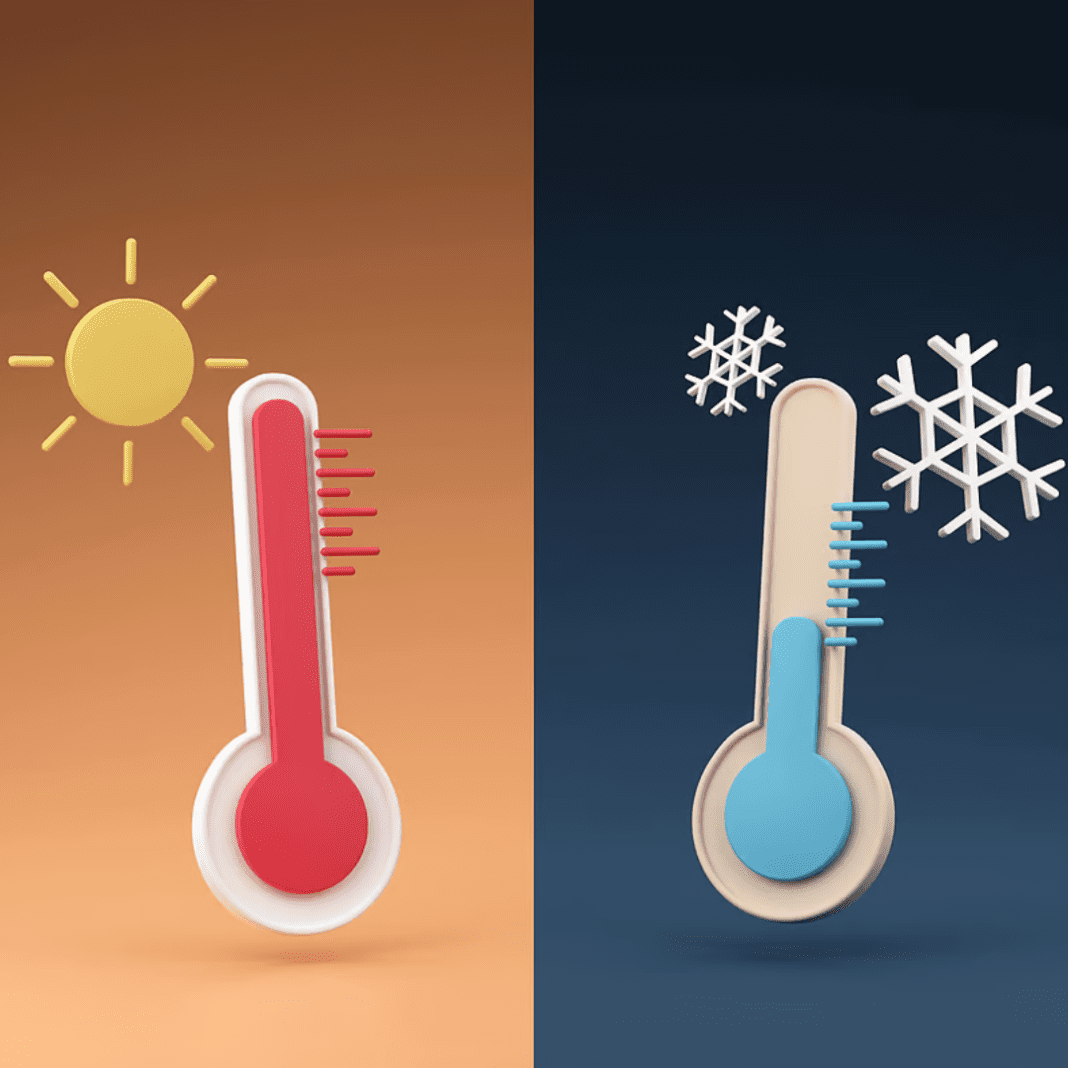What Are Temperature Flips?
A new global study has found that sudden shifts between hot and cold weather — called “temperature flips” — are happening more often around the world. These temperature swings can go from unusually warm to freezing cold, or the other way around, in just a few days. Scientists say this rapid back-and-forth is another harmful effect of climate change.
The research looked at weather data from 1961 to 2023 and discovered that over 60% of the planet has been affected by these fast-changing temperatures. These aren’t just small changes either. In many places, the difference can be over 20 degrees Celsius in less than a week.
These swings are not just uncomfortable — they can be dangerous. When it suddenly gets cold after a warm spell, people, animals, and plants don’t have enough time to prepare. For example, trees might start blooming early because of warm weather, only to be damaged by frost when the temperature drops suddenly.
This kind of extreme change is now being seen in areas across the world, including Western Europe, parts of Asia, South America, and Africa.
Why Is This Happening?
There are a few reasons behind these shocking weather swings. One of the main causes is a change in the jet stream. The jet stream is a fast-moving band of air high up in the sky that moves weather systems around the globe. Because of global warming, the jet stream has become “wavier” — think of it like a snake slithering more instead of moving in a straight line. This waviness causes warm and cold air to mix in unusual ways.
Climate Change Threatens Asia’s Future
Another factor is the change in how water evaporates from the soil. In hotter weather, the soil gets drier. When there’s not enough moisture in the ground, the temperature can change more rapidly, because dry land heats up and cools down faster than moist land. This makes heatwaves hotter and cold snaps colder — and both more sudden.
Researchers used the term “temperature flip” to describe a jump or drop in temperature that is one standard deviation above or below the average for that location, all within five days. That means these changes are not just surprising, they are way outside what is considered normal for those places.
What’s more troubling is that most of these flips are not one-time events. They are happening more frequently and with more intensity than before.
Real-World Examples of Sudden Swings
Several recent examples show how damaging these sudden changes can be.
In March 2012, North America experienced a rapid shift where temperatures dropped from 10°C above normal to 5°C below normal in less than a week. This caused a “false spring,” where plants began to bloom early. But when the cold hit, many of those plants were badly damaged.
The Climate Change Risk Birds Face Despite Big Brains
In another case, in September 2020, the Rocky Mountains went from a heatwave to a heavy snowstorm within a single day. The temperature dropped by more than 20°C. This caused power outages and damaged buildings and roads.
Europe faced a similar event in April 2021. After a warm start to spring, cold air suddenly moved in. The result was widespread frost damage to crops across the continent.
These events don’t just affect plants and buildings. Sudden changes in temperature also put a big strain on people’s health. For instance, quick shifts from warm to cold can lead to more cases of colds, flu, and even heart issues. Our bodies need time to adjust to temperature changes, and when that time is missing, people suffer.
Energy systems are also being tested by these wild weather changes. If a place suddenly gets hot, everyone turns on the air conditioners. If it gets cold right after, everyone needs heating. This unpredictable demand can overload power grids, leading to blackouts or higher energy costs.
Finally, while many scientists have studied extreme heat or cold separately, this research stands out because it focuses on the speed and intensity of these flips. That’s what makes them so dangerous — there’s little time to prepare.
Temperature flips are a growing global problem. They can harm crops, buildings, health, and energy systems. According to the study, they happen more often, in more places, and with greater force.





